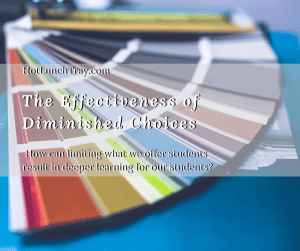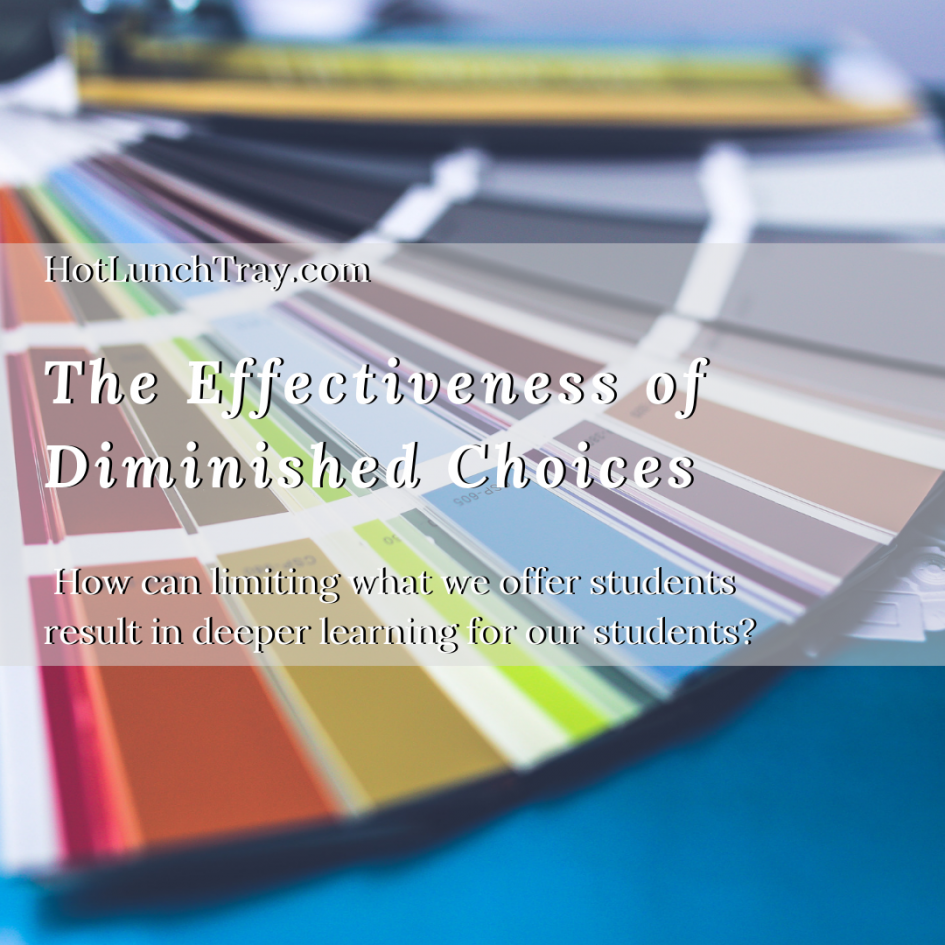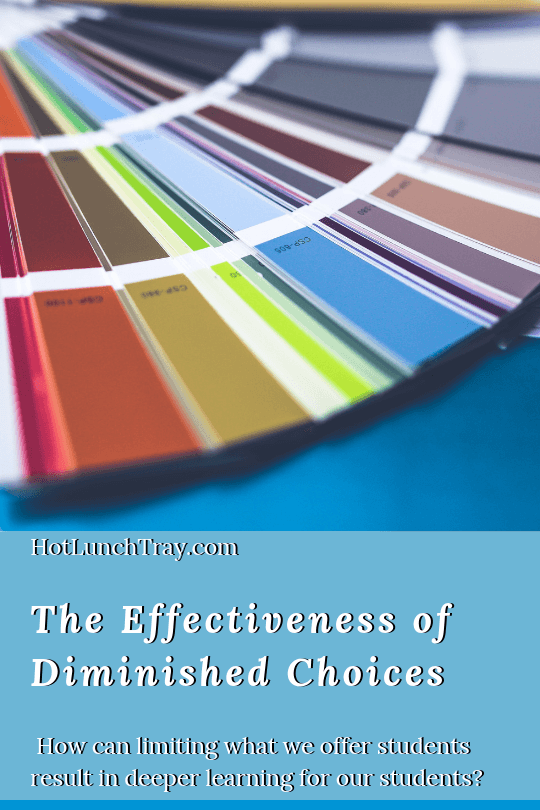In an age when everyone has more choices than just a couple generations ago could ever have imagined – it is time to consider the effectiveness of diminished choices.
Consider children and the overwhelm they often demonstrate with so many things to do. Can we help them narrow down choices, relieve stress while illustrating a clear path to success?
Classroom
At any time in the classroom, students need to know what choices they have to participate. Early in an education career, we learn not to offer all open-ended but instead structured choices to students. We do not want to overwhelm students, but to invite them into the driver’s seat of their education.
The book Learning to Choose, Choosing to Learn (Mike Anderson) has an informative ASCD Book Review. This book steps through the ways in which teachers can build predictable patterns of choices for students which are still influenced by teachers. Students benefit when they know the rules around classroom activities. Students think “the teacher will do this and I will do that.” This can result in a gradual release of control to the learners.
While Project-Based Learning, Student-centered classrooms, Design Thinking, Choice Boards, and 20%Time are all popular techniques teacher may still have some hesitation. The good news is that most teachers are excellent students and love to read (or listen) to a professional book to learn more about a topic before integrating it into the classroom.
No matter the climate or initiatives in your district or building, you can incorporate these choices into your classroom.
Online Classroom
My area of emphasis has been on Blended Learning for many years. So when I think about student choice in learning I consider the features and benefits of the online platform available to a teacher.
Online participation is new to many, so it is extremely important to limit options when you can to streamline interaction with the content, not the platform. Seek opportunities to limit extraneous choices for your students their families, online. Navigation to and with the course can easily offer limited choices. As possible, remove all but necessary options. Build in redundant ways to arrive at the same place if necessary, but train your students and their parents to navigate one way.
When students submit to your LMS the best possible solution is that students had a choice in how they completed your assignment (read: Microsoft Word or Google Docs), but can still submit the work to you regardless of the original format.
Projects
An easy way to start differentiating the student choice in your classroom is to offer two very detailed project choices for students, including the grading rubric. Although you may be tempted to include a third option, do not. Students will spend time daydreaming on details and will likely ultimately just choose one of your original two options. Instead, make sure part of the classroom culture is that they know they can approach you with alternative ideas.
A worthy goal is to move closer to a Project-Based Learning, Design Thinking, or 20% Time model. Start now to read Don Wettrick’s Pure Genius: Building a Culture of Innovation and Taking 20% Time to the Next Level to find the simplest, stand-alone project idea to insert into your classroom. And plan for PBL or Design Thinking facets to your instruction next year. While a more wide open choice set may sound counter-intuitive, the process of planning for the project shifts to the student in these models. While you are not limiting choices you are pushing choices to the students, and they will quickly narrow in on their areas of interest/choice.
A.J. Juliani, prolific education blogger and author, has several books which fit into this idea of choice within a scope. Learning By Choice: 10 Ways Choice and Differentiation Create An Engaged Learning Experience for Every Student is a great book to get started in the arena of planning for and delivering student choice in your classroom (Kindle Unlimited free book), Launch: Using Design Thinking to Boost Creativity and Bring Out the Maker in Every Student which shows you how to guide students through the ultimate open-ended process with all the thinking and work the responsibility of the students, The PBL Playbook: A Step-by-Step Guide to Actually Doing Project-Based Learning which can step you through implementing a Project-Based Learning classroom.
Some books to learn more about these ideas:
 |
 |
 |
 |
 |







Leave a Reply